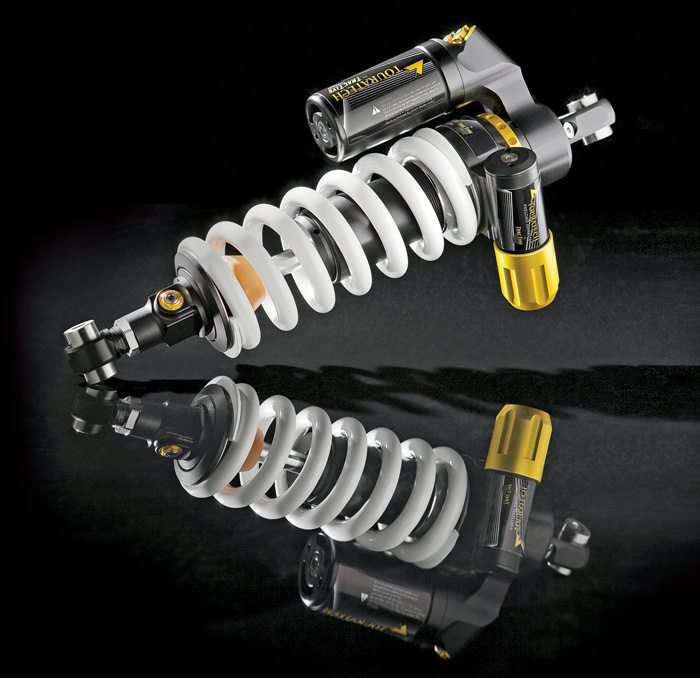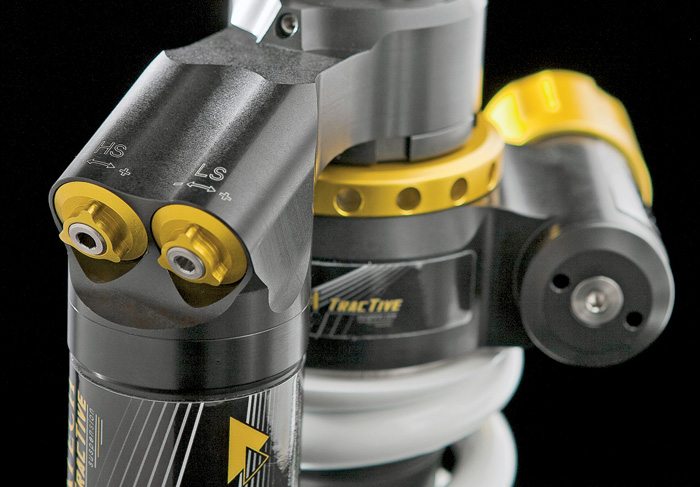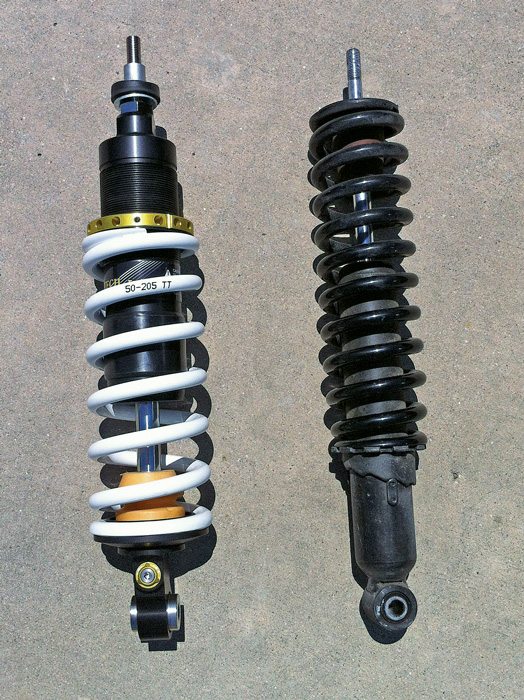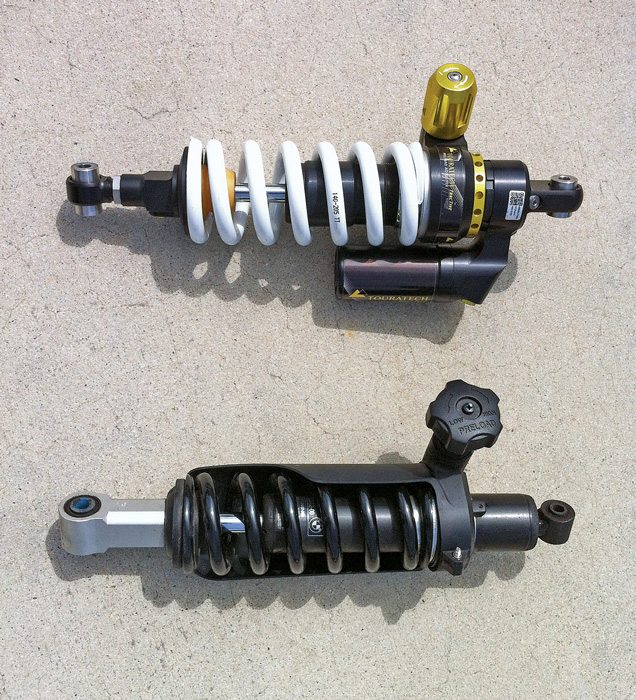
Adventure-touring motorcycles are often burdened with heavy luggage and accessories, then subjected to a fair amount of abuse when they’re taken to all of those adventurous places. In most cases, the bike’s original-equipment suspension is just barely up to the task; in more extreme instances it bottoms or simply fails when bushings or shafts break or seals blow. The weakest link is usually the shock or shocks on the rear. Even with all of the preload dialed-in on my 2007 BMW R 1200 GS rear shock, it sagged way too much when ridden two-up with a full set of loaded hard luggage aboard, and the bike handled badly. I had also read reports of the stock rear shock on this bike blowing seals on long, fully loaded rides. The R-GS Telelever front suspension uses a shock absorber, too, and its harsh, underdamped performance needed improving as well.

The motorcycle aftermarket offers many high-performance replacement shocks, but it wasn’t until recently that purpose-built ADV shocks have come out. Touratech says its new “overbuilt” suspension line is the world’s first made specifically for adventure-touring motorcycles with luggage. It currently offers shocks for late-model and older BMW GS bikes back to the R80, as well as the Yamaha Super Ténéré, Suzuki V-Strom 650 and 1000, and Triumph Explorer 1200 and Tiger 800 XC. The top-line rear shock is called the Extreme. Since I wanted an adjustable shock length and hydraulic spring preload adjustability, I paired one of these with Touratech’s Explore front shock for my R 1200 GS.
Touratech’s Explore, Explore HP, Expedition and Extreme shocks range from $795 to $1,795, but have several things in common. You can read the complete list on touratech-usa.com. The most important in my case were the 50-percent additional preload adjustment for a wide range of loads; oversized 16mm shaft made of chrome-moly steel for strength and durability; the low-friction seals; and the high-strength stainless steel bushings at each end to ensure the mounting points will go the distance. When you order the shocks, Touratech has you fill out a rider profile form so it can match the spring rates to your requirements (in fact, I had to send the rear shock back once to swap the spring for the next higher rate, which Touratech does free of charge). All have adjustable rebound damping with an appropriate range for a fully loaded bike right out-of-the-box, too.
The Extreme rear shock has all of the extras. There’s a remote or piggyback fluid reservoir depending on model, and hydraulic preload adjustment, vital for setting it for solo unloaded riding then quickly going up the maximum of 15mm (65 clicks!) for two-up and fully loaded riding on the GS. It also has 8mm of shock length adjustment that I hoped, in the shortest position, would get the seat height down a little (don’t think so), but you could also use this to raise the back of the bike and quicken the steering if you’re tall. And the fully adjustable damping includes separate high- and low-speed compression dials, as well as rebound that is all position-dependent and prevents bottoming.
Though Touratech’s mounting instructions are very basic, dismounting and mounting the rear shock on an R 1200 GS is easy and there are lots of tips online. The one hitch is that the carbon canister on my ’07 had to be removed to accommodate the shock’s piggyback reservoir, but that’s easily done as well. The front shock is a little tougher but straightforward if you appreciate that the fork has to be completely extended to remove the old shock and install the new one.
After installing the rear shock and setting the sag and preload per the owner’s manual, I took the GS for a long ride on a twisty, notoriously bumpy loop that I had just ridden with the stock shock the week before. It was as if they had finally repaved the road. With just six clicks on the preload and damping set to standard, all of the harsh stiction in the rear suspension was gone, replaced with butter smoothness yet firm control. The shock neither kicked-back like the old one nor packed down, and the damping settings are easily changed with the included bit driver. When I got home, I racked the preload up to near maximum, installed all of the luggage and filled it with the maximum load (we had just stocked up on soda and canned goods), then the wife and I donned our riding gear and got on. We had a neighbor measure the sag, and bingo, it was perfect. A test ride netted an equally good result to the solo spin.
I was so pleased with the result I dove right in on the front shock, and the next day found it too delivered a much improved ride right out of the box, with plenty of preload and rebound damping adjustability. I now have much more confidence that these shocks will hold up on the long loaded rides and dirt-road adventures I have planned for the near future.
For more information, contact Touratech USA at (800) 491-2926 or visit touratech-usa.com.










